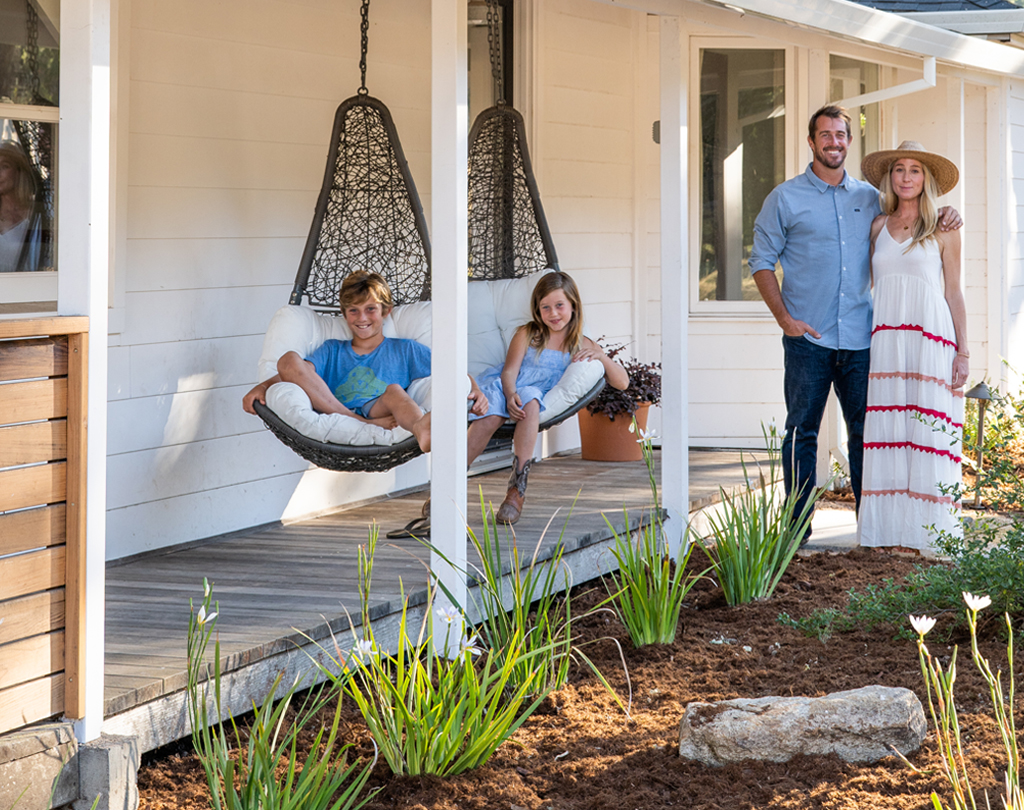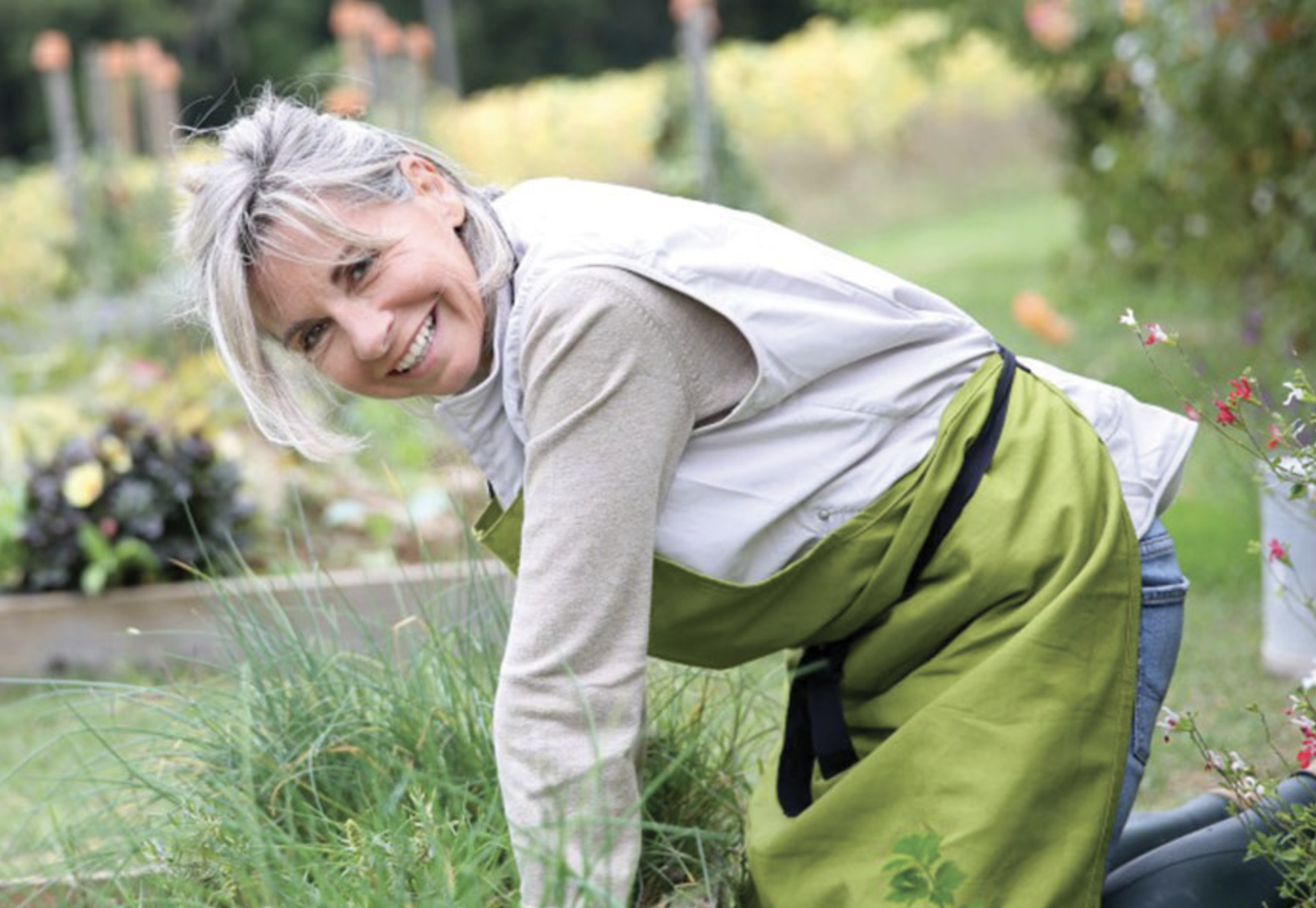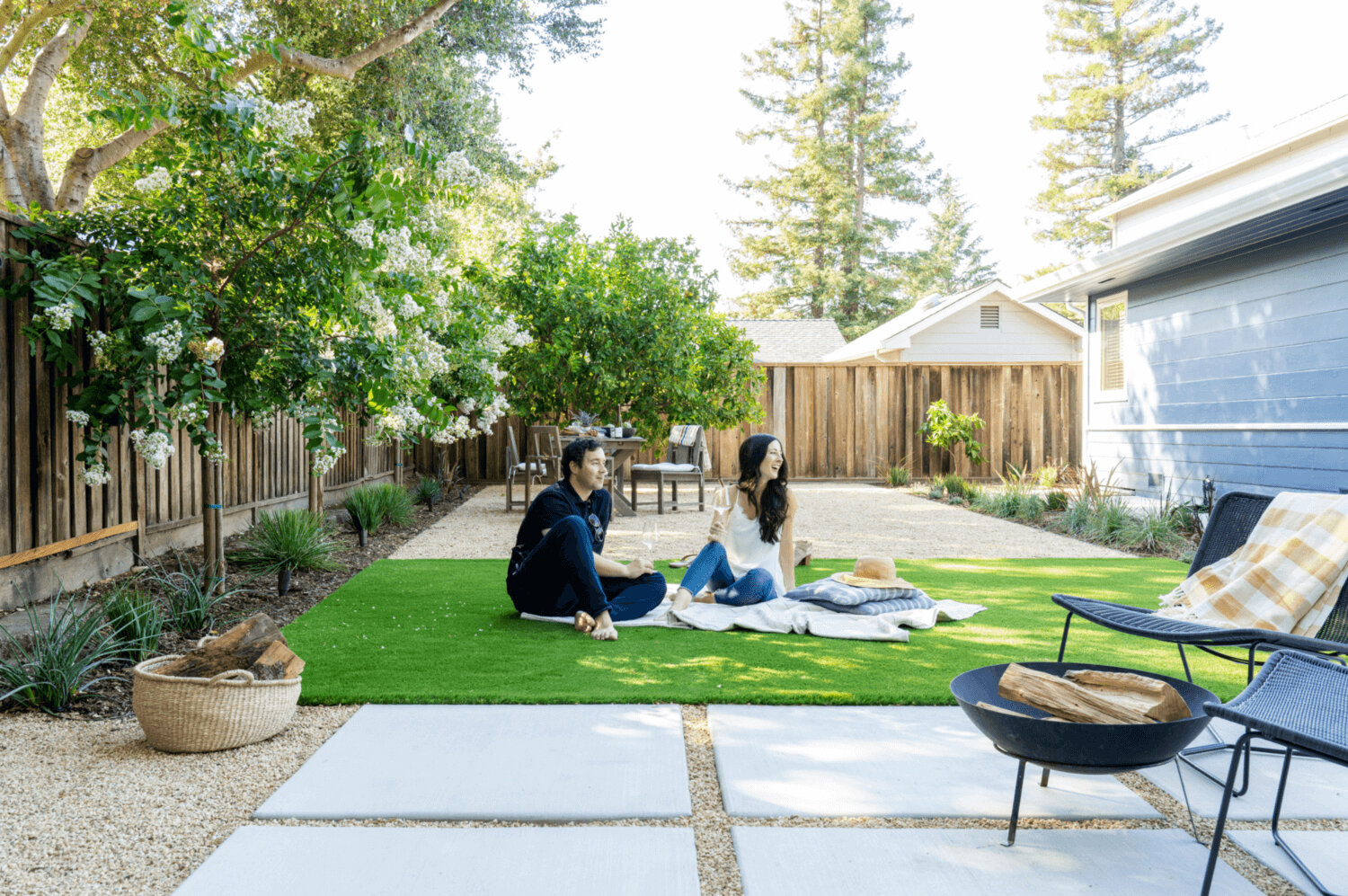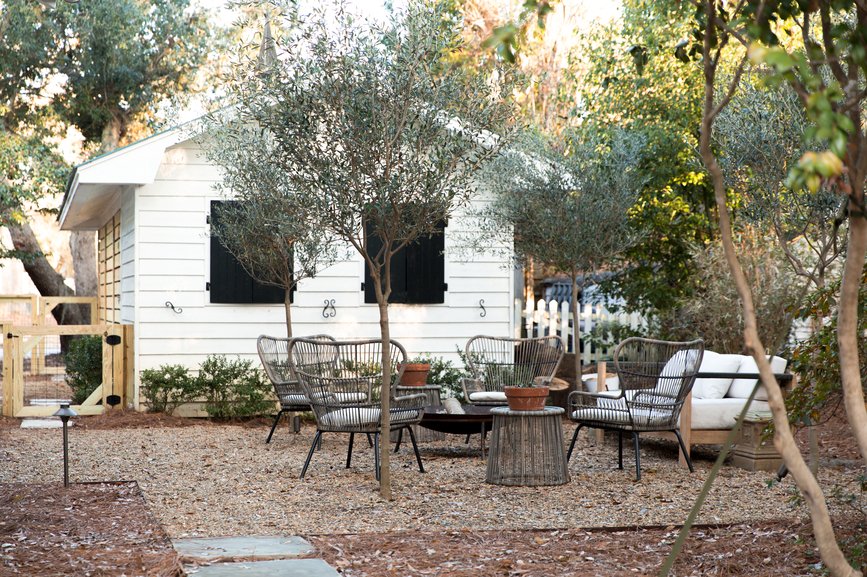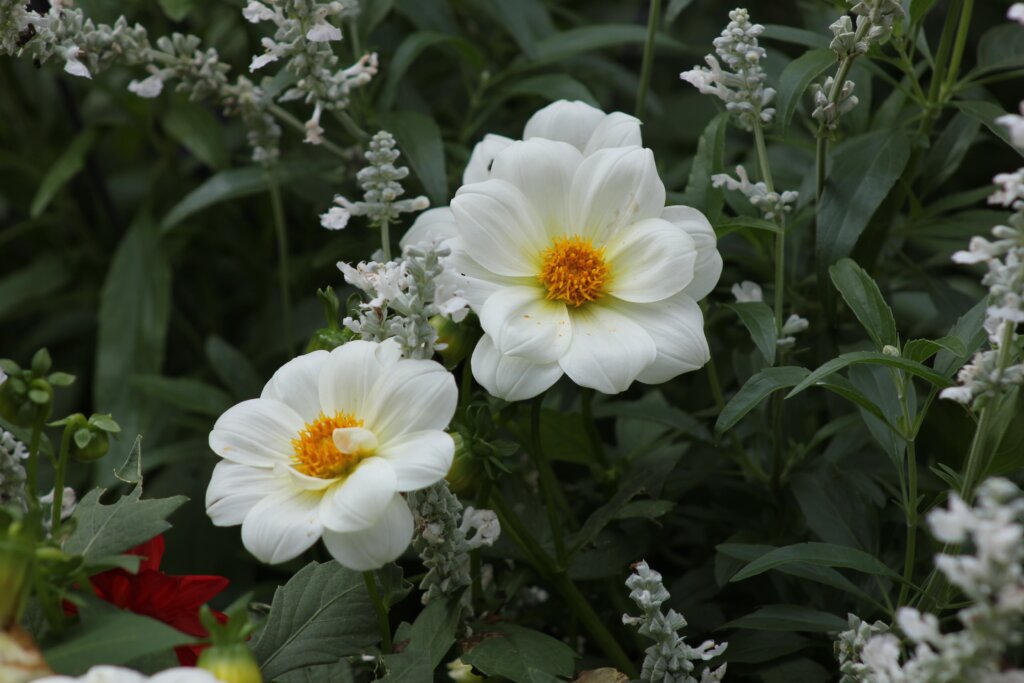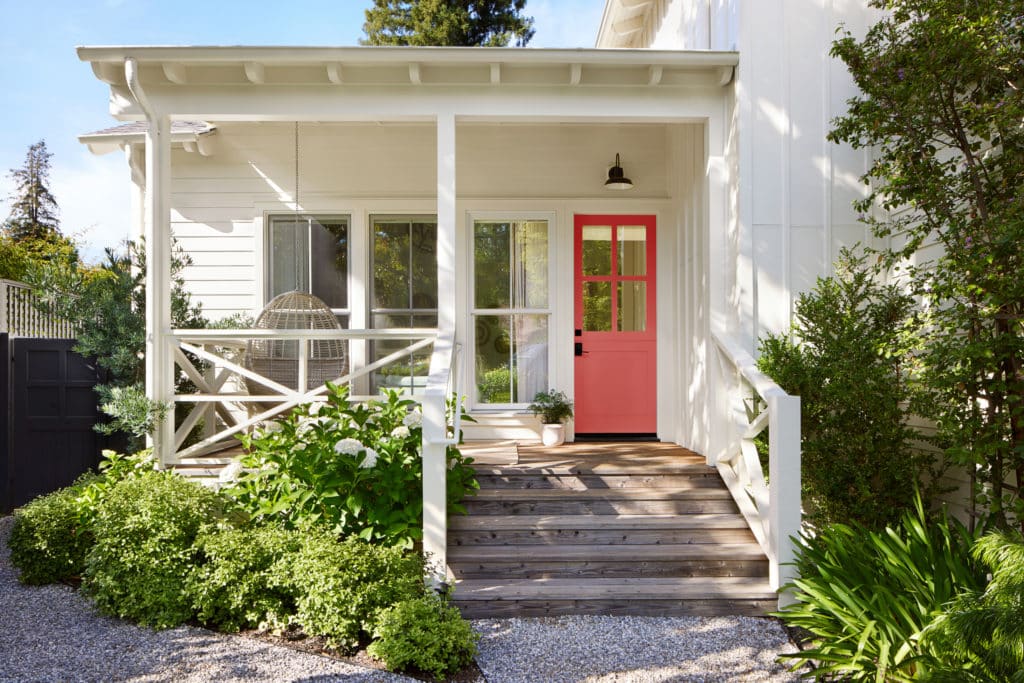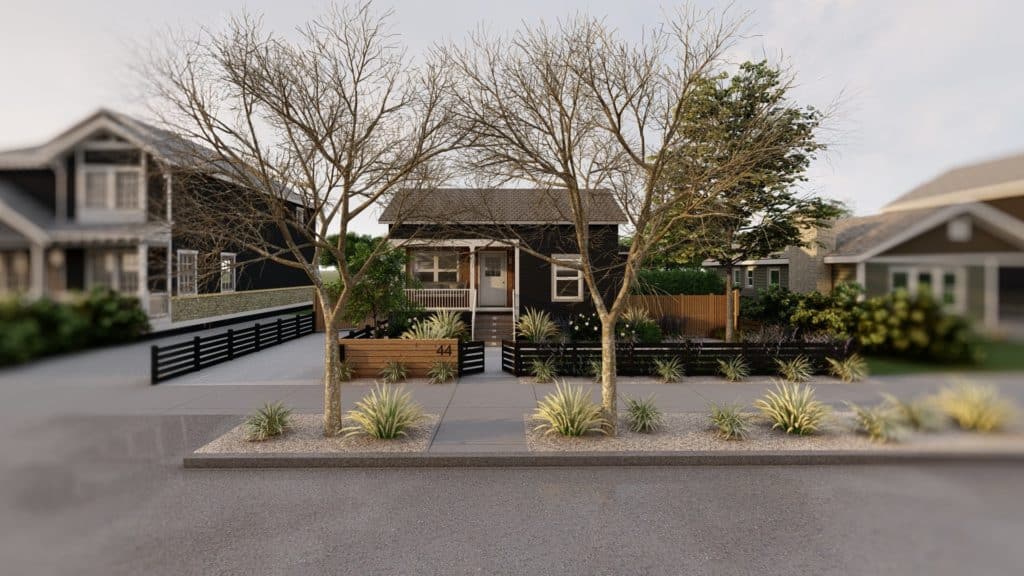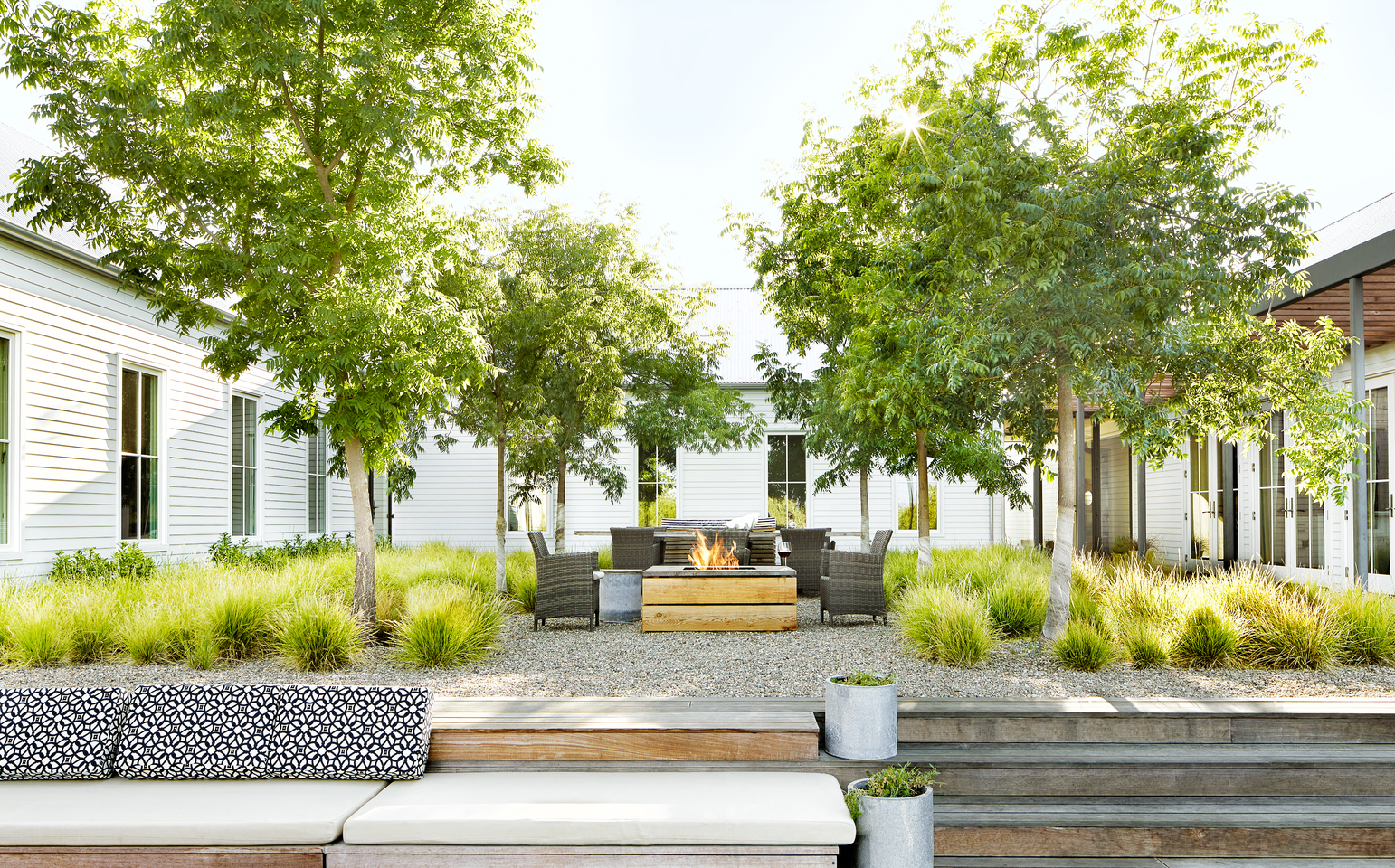
Low-maintenance landscaping in this backyard
Yardzen clients live busy lives, so it’s no surprise that one of our top design requests is “low-maintenance plants.” In other words, plantings that look beautiful with little human intervention. This is one of the top reasons to work with a landscape designer— to craft a yard that appears thoughtful and well-considered. Yardzen’s Design Director, Kevin Lenhart, shares the guiding principles of low-maintenance softscape design.
Pro Tip: Low-maintenance plants tends to be more sustainable and require fewer natural resources.
Get started on your low-maintenance yard today with Yardzen!
What is Maintenance, exactly?
Mowing, watering, fertilizing, raking, trimming, dealing with seasonal shifts, and fixing broken stuff are some of the many tasks that comprise landscape maintenance. You’ll never eliminate all of these steps, but smart planting choices will minimize them.
Low-maintenance planting should:
Minimize time and money spent on upkeep
Minimize inputs applied to the landscape (water, fertilizer, etc)
Maximize plant success
Maintain your desired landscape style
To this, we would add three ecological goals that can be achieved – without necessarily intending to do so – simply by pursuing a low-maintenance design:
Habitat expansion
Water and energy conservation
Pollution prevention
A Yardzen backyard with low-maintenance plants
Designing with Low-Maintenance Plants
Well-maintained plantings looks legible, well-organized, and intentional. These are qualities people uniformly appreciate in landscapes, regardless of style.
Right Plant, Right Place
Rule #1 of low-maintenance planting: choose plants that are well-adapted to your site. The happier your plants are, the less they’ll need your help.
Native species with proven landscape performance are a great place to start. Place native plants in conditions that match their natural habitat, and they’ll thrive with little to no irrigation or soil amendment—they’ll actually prefer to be ignored.
Don’t feel limited: climate-adapted plants can also be simple to grow when your yard and their native range share a similar climate.
Wherever your plants come from, the trick is to assemble a group of species that:
Occupy different vertical levels (ground-level, low, medium, tall)
Enjoy the same light, soil, water, and climate conditions (the conditions of your site)
Look good next to each other
Do this, and you’ll be tending a community as a whole, not catering to individual plants.
Limit Lawn
We’ve said it before, but it bears repeating: lawns are the most management-intensive part of a yard’s landscape. To maintain a lawn, one must mow, apply fertilizer, and irrigate (heavily, in much of the US). This all requires a lot of time and resources.
The trouble is, lawns are also useful. No plant beats a lawn for walkability.
Strike a balance: keep enough lawn to do the running, playing, and lounging that you demand from your yard, but avoid lawns that are purely decorative. Minimizing lawn minimizes your maintenance. It also reduces pollution to waterways from excess fertilizer, and energy consumption from mowing. If you want the look of a decorative lawn, include it sparingly as a foreground to frame larger planting areas, not as a broad scenic field.
Turf looks beautiful and natural in this Yardzen yard paired with gravel, mulch, and low-maintenance plants
Consider Turf
As we shared in our Guide to Grass Alternatives, turf is an excellent alternative to lawn that is highly durable and doesn’t require the time and natural resources that lawns do.
Low-maintenance plants and mulch in this Yardzen yard
Use Mulch
Mulch blocks weeds, keeps soil moist, insulates against temperature swings, and, when plant-derived, slowly enriches the soil. It’s not the only low maintenance ground covering, but it’s very effective.
When choosing mulch, consider your climate. Wind, rain, heat, and native flora all influence the type of mulch you should use. Also consider upkeep when choosing and placing mulch. Bark mulch requires annual replacement, and most any mulch can be kicked, washed, or blown outside its intended bounds.
Pro tip: if you lean naturalistic, you can mulch by simply allowing leaves to remain where they fall. Leaf litter is the original mulch, and a rich source of soil nutrients and insect habitat (if you want birds, you need bugs).
Densely planted perennials via Smale Riverfront Park
Plant Densely
With time, weeds will grow through mulch—the enriched soil and lack of competition in bare patches of planting beds are irresistible to them. If weed suppression is a priority, dense planting is a more effective strategy to pursue. It’s also pretty (if you ask us), and with the right plants, it can be very easy to maintain.
Dense planting mimics natural plant growth patterns, in which unplanted areas are scarce, and plants grow amongst each other in distinct vertical layers. To be clear: “dense” does not have to mean bulky, messy, or heavy. You may be picturing hulking shrubs and rangy perennials, but it’s easy to maintain breathing space and clean lines while still planting densely.
To do so, utilize low, spreading ground cover species to fill gaps between taller plants, spaced as widely as you wish. Ground cover plants are cheap, attractive, easy to maintain, and great at beating back weeds. Ground cover plants around the base of trees are an easy habitat win, too.
Pro tip: use a single ground cover species for a controlled and minimal look, and two to three species for a more natural feel.
Fussy Flowers
Big showy flowers are the pride of many traditional gardens, but they can require a lot of work and create quite a mess. Those seeking a low-maintenance landscape design would do best to avoid annuals, Heirloom Roses, and other flowers that require lots of tending and cleanup. If these species are a must-have, limit your work by keeping all your high-touch flowers in a single part of the yard.
Plants of varying heights, structures, and textures in a Yardzen yard
Seek Structure
Instead of looking for showy blooms, lean on plants with great natural structure to anchor your designs. Handsome evergreen shrubs, upright ornamental grasses, or sculptural cacti and succulents do fabulously in the spotlight (just pick the right plant for your region and climate). Flowers fade, drop, or require deadheading. A great structural plant is a living, no fuss work of art.
Soft Around the Hedges
Trimmed hedges and topiaries require constant tending. Skip the trimming and allow your hedges to grow in a natural form.
Pro tip: boxwoods, Pittosporum, and other common hedge species tend to have a compact form that projects the same geometric feel as a trimmed hedge, just with a touch more softness.
Fruitless olive trees prevent the mess of fruiting olives
Litterbugs
This one is obvious: avoid species known for heavy litter. In particular, avoid plants with significant seed or fruit drop—fruit drop on paving is a maintenance nightmare. (Fruitless olives are great for low-maintenance yards.)
While they are more work than evergreens, deciduous trees and shrubs can be worth the seasonal leaf cleanup. We love the dynamism deciduous plants lend to planting designs. Our advice: balance your maintenance tolerance against the benefits of deciduous species to your design.
For Kids and Dogs
If you have kids or dogs, plant for toughness where it counts. Hardy plants tolerate a bit of trampling, but delicate species will leave you on the hook to tend or replace damaged plants. If you have delicate species, you can improve their odds of survival (and yours of less maintenance) by placing them safely away from high activity areas.
Plant Containers
Planting in containers gives you extra control over planting conditions. You will determine soil type, water, and light, and can adjust plant position as needed to improve plant condition.
Pick container-friendly species, especially ones noted for easy care. Set them up with the soil and light conditions they prefer, and follow their recommended irrigation schedule.
Want to make it even simpler? Pipe drip irrigation through the bottom of large outdoor container plants. Just place them carefully – you don’t want to move them once the irrigation is in place.
Do What Nature Would Do
Following these steps will maximize your odds for hassle free planting, but there is never a guarantee that plants will survive without a little extra help, especially in their early years.
Time reveals which species are and are not a good fit for your yard. If a plant fails to thrive, or requires too much support, don’t be afraid to replace it with a species that is a more natural fit to the site. This is how nature would handle things.
Featured Articles
How an Interior Designer Created “Outdoor Rooms” in Her Yardzen Yard

The Best Outdoor Cold Plunge Tubs & Ice Baths in 2024 (Chosen by Our Client...

Our Dreamiest Plunge Pool Yard Designs
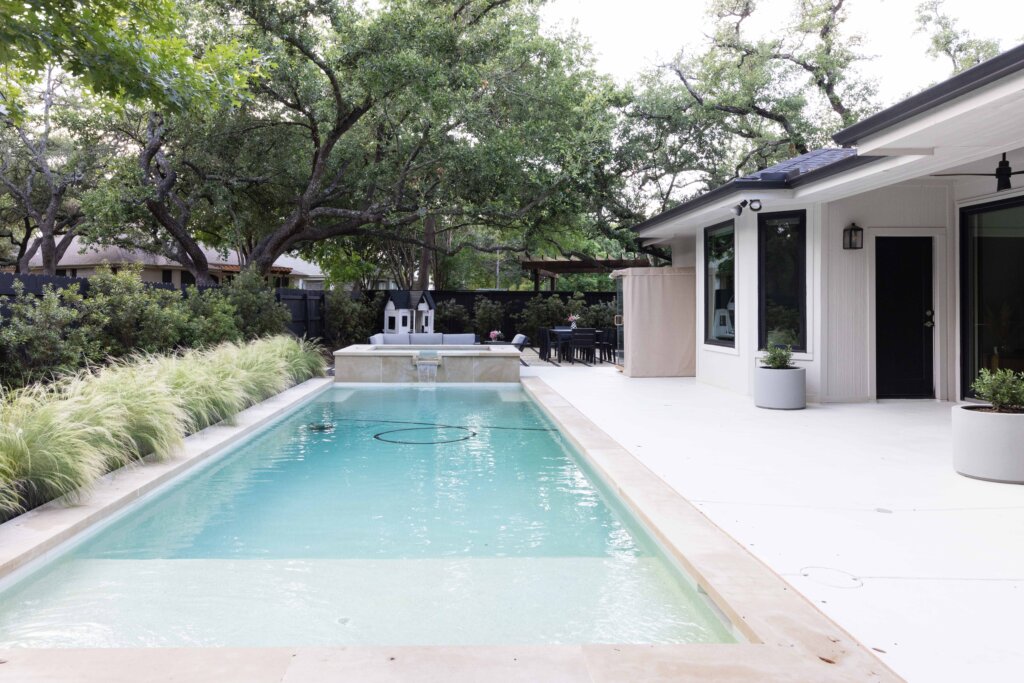
Our Favorite No-Grass Front Yard Ideas

